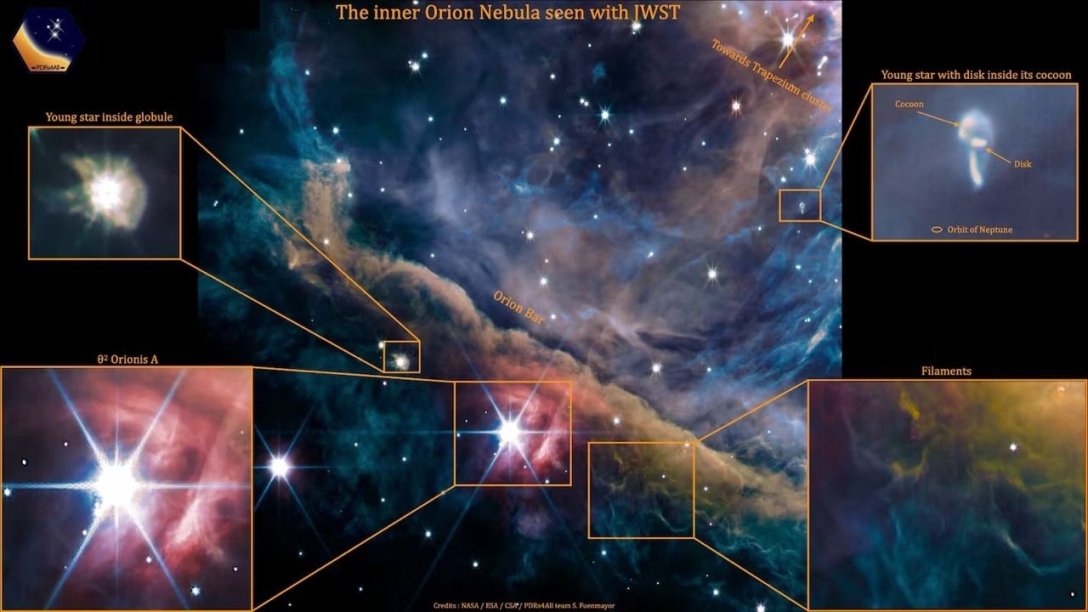
As the researchers emphasize, the images reveal complex details of the formation of stars and planetary systems.
The James Webb Telescope was hard at work this weekend studying the amazing inner region of the Orion Nebula, Inverse reports.
Orion is a constellation in the night sky that can be identified by a ‘belt’ of three white-blue stars, the brightest of which include Rigel, Betelgeuse, and Bellatrix. A star ‘sword’ hangs from Orion’s belt, and the big bright star near the point of this sword is not really a star, but a whole nebula, a cloud of gas, dust and newborn stars. Because it is the closest star-forming region to Earth, it is of great interest to astronomers interested in how stars are born.
The new Webb image, a composite of multiple photographs taken through 11 different filters on the Near Infrared Camera, or NIRCam, shows Orion’s streak, a radiation-exposed wall at the center of the nebula, home to young stars.
A wall of dense gas and dust crosses the image from the upper left to the lower right, forming a sort of bastion against the ultraviolet radiation emanating from the cluster of massive stars burning in the upper right, Orion’s Trapezium. This collapsed space wall is called the Orion Bar.

This image highlights several key features of the Orion Bar, including newborn stars and interstellar filaments of gas and dust
The continuous onslaught of stellar energy is also changing the Orion Bar on a much smaller scale. Physicists call such regions ‘photodissociation regions’ because the stellar radiation (‘photo’) destroys molecules (‘dissociation’) and separates electrons from atoms.
The edge facing Orion’s Trapezium catches the full force of the energetic bombardment of young stars. Here, the ultraviolet radiation is strong enough to knock electrons off hydrogen atoms, leaving behind a cloud of ionized hydrogen gas (that is, a cluster of protons).
‘The filters used to create this image captured different wavelengths of light emitted by ionized and molecular gas, dust, and hydrocarbons. As a result, in the lower right corner, we can observe several long winding filaments rich in molecular hydrogen and hydrocarbons,’ they said researchers
In addition, the photo also shows two very young stars: one with a planetary disk, a collection of dust, ice and gas that will one day coalesce into planets forming around it, and the other, which is still in a cloud of gas and dust .

